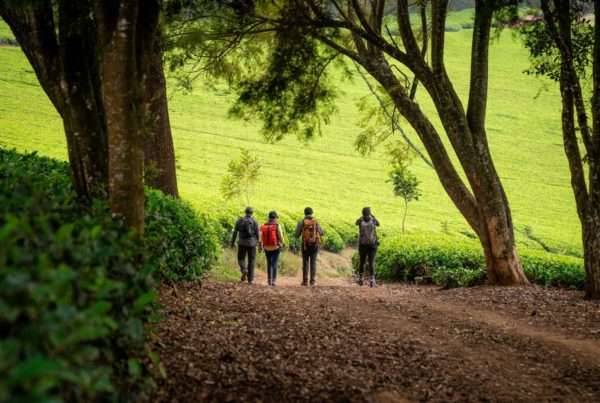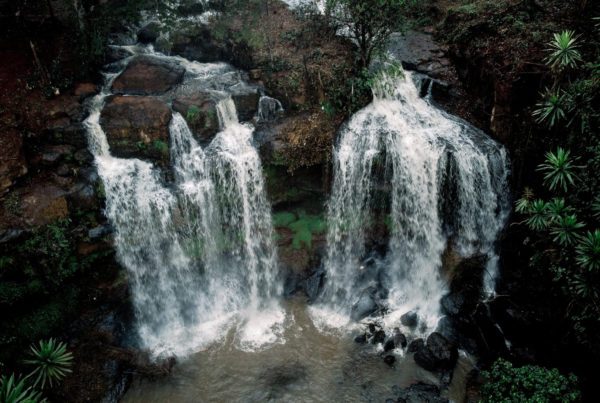Hey Drifters,
To help you find the perfect adventure for you, we have marked each experience with a difficulty level. There are five different difficulty levels: easy, moderate, challenging, demanding, and extreme. Each difficulty level determines the abilities needed to venture onto the hike. Below you’ll find a thorough explanation of each difficulty level and its possible combinations.
Please note that our experiences, unless explicitly stated, are accompanied by a knowledgeable and trained guide, regardless of the difficulty level. The guides’ top priority is your safety, and they stay with you every step of the way.
Difficulty Levels
Easy
For most people, young and old in good health. No more than 300 m (1000 ft) of elevation gain and no more than 10 km hiking. The trails are mostly in good condition. The backpack should be a light daypack (less than 5kg, 11 lbs) with snacks lunch and raingear. Up to 5 hours on the trail. Examples of easy trails include Cianda, Tigoni and Njabini.
Moderate
This is for people in good health who exercise regularly. Hiking is no more than 16 km and elevation gain no more than 500 m (1500 ft). Trails are mostly in good condition. The backpack should be a light (less than 5kg) daypack with lunch snacks and rain gear. A minimum of 5 hours on the trail and up to 8 hours can be expected. Examples of moderate trails include Nyanduma, Kieni Forest and Githobokoni.
Challenging
For someone in good physical health and in good hiking condition. The hiking day has up to 20 km of hiking and/or significant elevation gain, but usually no more than 1000 m (3280 ft) of elevation gain. The trails are in good condition but some parts could be in poor condition. The backpack should be a light (less than 7 kg) day backpack with lunch, snacks, and water, also rain-gear, and possibly some other equipment issued by the guide if necessary (for example crampons, headlamp, or other equipment). Usually 8 hours on the trail, but up to 10 hours can be expected. Examples of challenging trails include Gicheru, Rurimeria and Mt Satima.
Demanding
For someone in good physical condition with prior hiking experience. Hiking can be in excess of 20 km. Elevation gain can be up to 1000 m (3300 ft). The trails are mostly in good condition but some parts could be off-trail. Steep or exposed sections can also be expected. The backpack should be adequate for food, water, and extra clothing for the day and also additional equipment provided by the guide such as crampons, or other equipment. The weight of the backpack should not exceed 10 kg or 22 lbs. Days can be long but should not be in excess of 10 hours on the trail. Examples of demanding trails include Mt Kinangop.
Extreme
For someone in very good physical condition and with prior hiking experience. The day can be but not necessarily in excess of 20 km (12 mi). Elevation gain can be but not necessarily in excess of 1500 m (5000 ft). Hiking is usually off-trail or on poor trails. Steep or exposed sections can be expected. The backpack should be adequate for food, water, extra clothing, or other equipment. Days can be long but should not be in excess of 15 hours on the trail. This can be a glacier hike so check the equipment list carefully. Examples of extreme trails include Hikeathon.
Other factors to consider
Novice and serious hikers can get sick or injured on even the easiest of hikes. Hike difficulty is only one factor that needs to be considered. Appropriate hiking gear, including the right hiking boots, moisture-wicking clothing, camping mess kits, and food can make for a more comfortable hiking experience. Maintain hiking gear and be aware of potential changing weather conditions before heading out.
Changing weather conditions can also make for a more difficult hike. Setting out on a day that may prove inclement means dressing in water-wicking fabrics and avoiding cotton. Wet fabrics can make a hiker uncomfortable and make it more likely that they get sick after prolonged exposure to the elements. Pouring rain can make a moderate trail feel more difficult as it can impair traction on steeper areas, so make sure you’re wearing durable hiking boots.
Please Note: We always do everything in our power to follow the set itinerary, however it can change occasionally based on temporary access restrictions, weather, lodging/campground availability, guest ability/injury, natural events like fires and flooding, and other causes. Normal terms and conditions apply to trips with itinerary changes.
One more thing; our members mean the world to us and we’d love to hear your feedback.
Would you be kind enough to leave us a Google review? It only takes a few minutes and we’d be grateful! Just click here to go to our Google Business page and leave us feedback.







